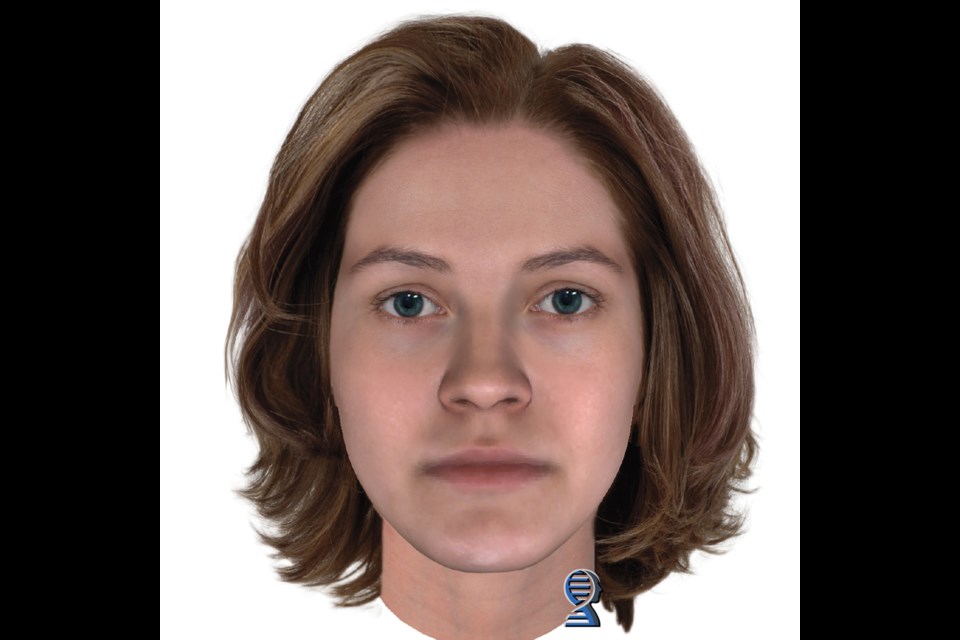THUNDER BAY – Investigators are optimistic 21st-century technology will help crack the Baby Doe cold case, 25 years after the newborn boy’s frozen body was found in a garbage bag near Boulevard Lake.
The Thunder Bay Police Service on Thursday released a DNA-predicted image of Baby Doe’s mother, using forensic evidence collected at the scene to generate a composite snapshot of the woman’s possible appearance.
On March 9, 1994, police were called by young teenagers who found the black garbage bag that contained the body of the baby boy five days earlier on the east side of Boulevard Lake. After initial curiosity, one of the teens finally looked in the bag and discovered the body.
Det. Jason Rybak said the boy was born alive and healthy, just hours or days prior to his death, leading to the case being investigated as a murder. The cause of death was determined to be hypothermia.
“Thanks to the advancement of technology and these revolutionary services, solving the case of Baby Doe is no longer a question of if, it’s a matter of when,” Rybak said at a news conference.
“We know there are people out there who know what happened but for whatever reason have chosen to remain silent for 25 years. The time for silence is over. It’s time to come forward and speak to us to better understand the circumstances surrounding the death of Baby Doe.”
Along with the body, investigators found what Rybak described as “articles in the garbage bag” that contained DNA believed to belong to the baby’s mother.
Rybak said investigators have ran the DNA through the national databank, but without success.
Investigators sent the DNA to Parabon NanoLabs, a Virginia-based DNA technology company that uses its Snapshot DNA Phenotyping Service to predict physical appearance and ancestry.
“This snapshot produced trait predictions for the associated person of interest – the mother of Baby Doe,” Rybak said, calling the image a scientific approximation of appearance based on DNA and not likely to be an exact replica, adding that it can’t determine age, body type, hair style or other appearance features determined by lifestyle choices.
“Individual predictions were made for the subject’s ancestry, eye colour, hair colour, skin colour, freckling and face shape.”
The technology recently helped solve a 20-year-old Sudbury cold case homicide, which piqued the interest of Rybak and the police force’s senior leadership in pursuing it for Baby Doe.
“This is another tool in our toolbox,” Rybak said. “I’ve seen the successes they’ve had in the United States and as well as in Sudbury. I believe this is hopefully going to trigger people to come forward and provide that last piece of information.”
“We essentially need a name. We’re hoping this picture is going to get us that information to lead us to some more investigative avenues.”
Rybak was unable to answer how much it cost to generate the DNA-predicted image.
“To me, the death of a baby or the death of anybody, costs shouldn’t really come into the equation,” he said.
The heartbreaking discovery captivated the city, with fundraising efforts made to help support mothers in distress and a funeral was held for Baby Doe, drawing a large crowd.
“This case has had a tremendous impact on the community,” Rybak said. “Many attending this funeral describe the sight of six uniformed Thunder Bay police officers carrying the tiny infant as haunting. Also troubling for the community is the fact that no one has broken their silence surrounding the death of Baby Doe even 25 years later.”
Police have established a specific telephone tip line for the case, asking anyone with information to call (807) 684-5001. People can also provide information anonymously through Crime Stoppers.
